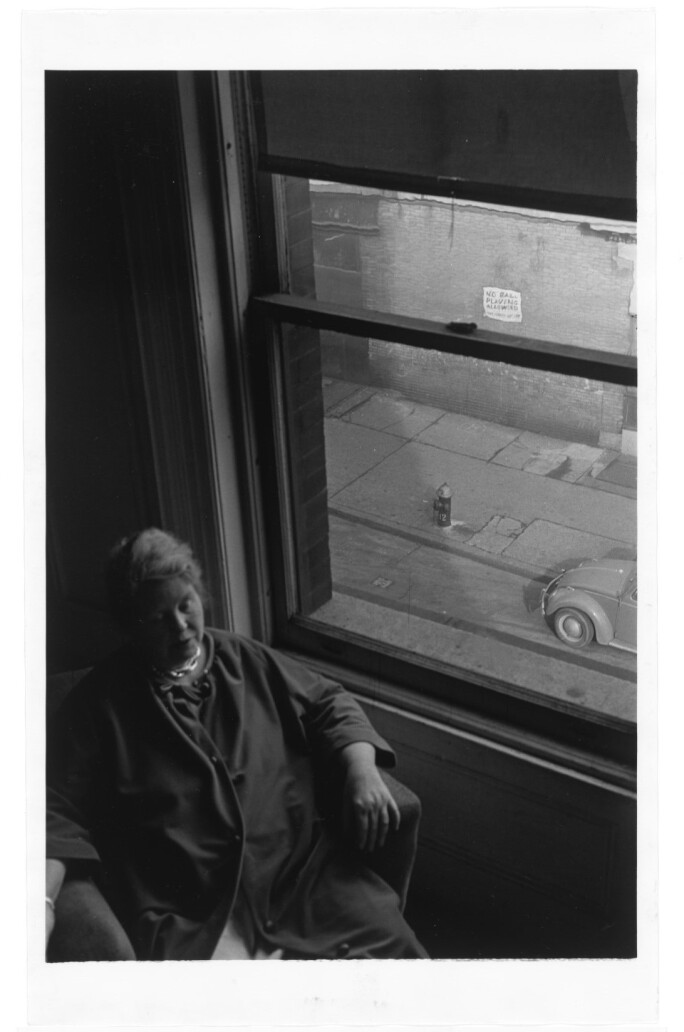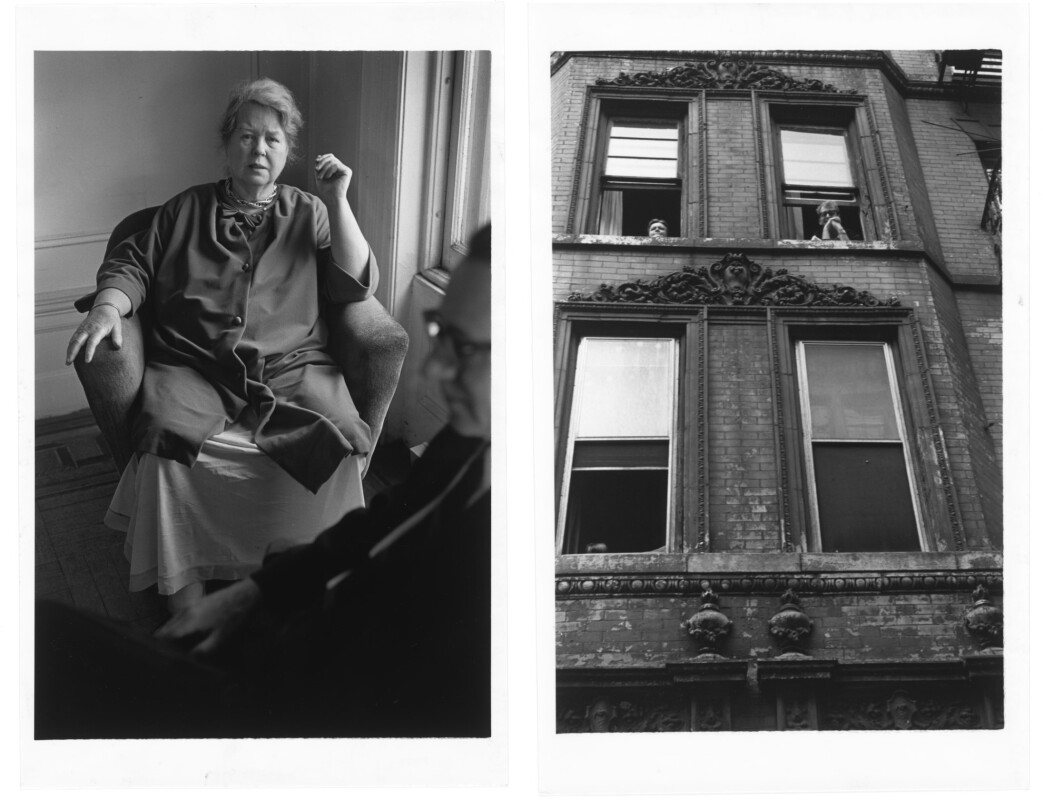
This painting, Windows, was made by Alice Neel in her Upper West Side apartment, looking through her window and across the street at the building opposite. Painted on a brilliant, sunny day, the work offers a sumptuous palette of beige and pink on the facade of the building. The windows, with curtains, shades and shutters drawn to protect their occupants from the glare, take on distinct individual personalities, and at the lower left, we see the shadow of Neel's own building.
This facade became Neel’s subject on many different occasions and in different lighting situations, much as Monet painted series of haystacks and the facade of the Rouen Cathedral. For example, it figures in Neel’s painting Loneliness, 1970, now in the National Gallery of Art. Of Loneliness, New York Times art critic John Russell wrote in his 1982 review of Neel’s Robert Miller Gallery exhibition,
“...The glare of sunlight on a distant wall, the windows turned to melodrama by deep shadow, the sense of loss and loneliness for which just one empty chair can speak out loud and clear.”
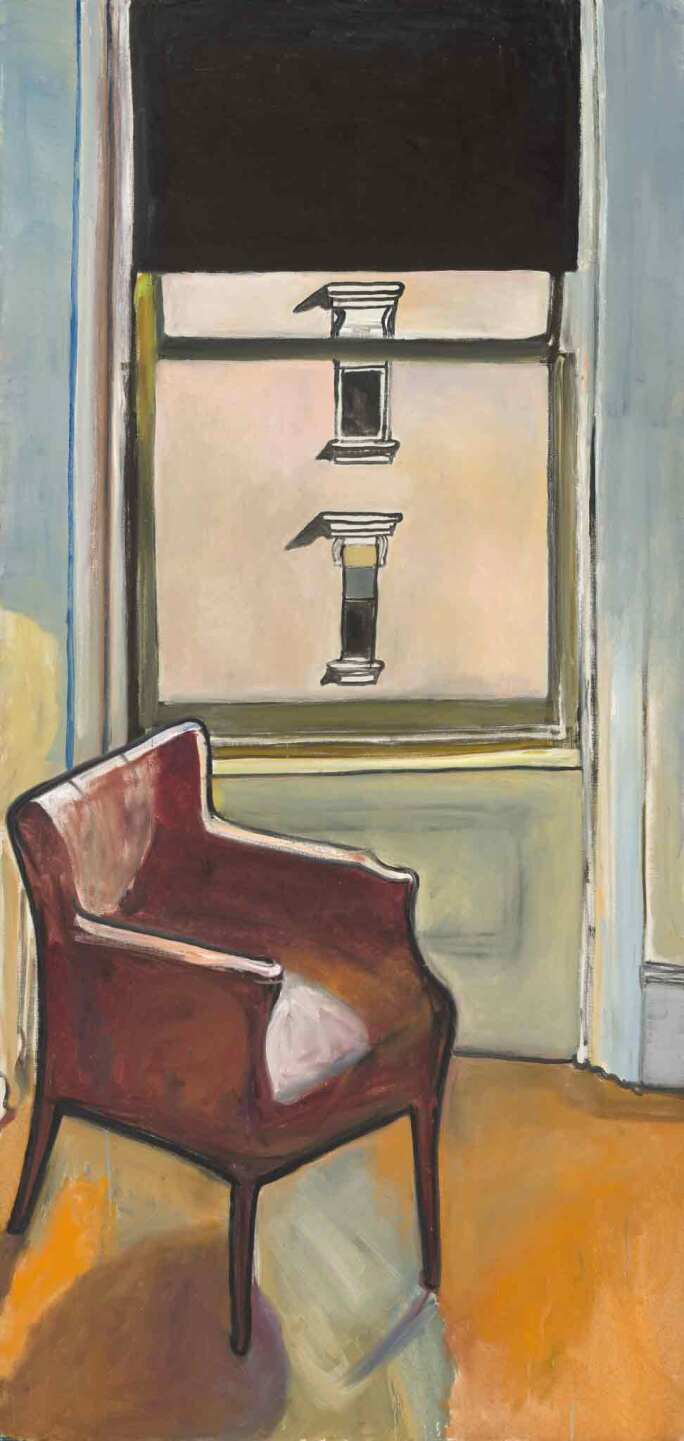
An intimate vision of Alice Neel’s own, highly personalized world, Windows embodies the honest interrogation of inner life that rests at the heart of Neel’s extraordinary oeuvre. Executed in 1965, the present work emerges from a pivotal period in Neel’s career, during which her resolutely realist mode began to garner increasing recognition and acclaim—an exceptional accomplishment in a period dominated by a new generation of abstract painting. A rich and detailed image of the New York cityscape, the painting is imbued with an intimate sense of familiarity, grounding the viewer. A testament to the significance and quality of this work, Windows was acquired nearly six decades ago by the artist’s close family friends Jonathan and Monika Brand, and has remained proudly in their esteemed collection ever since. The Brands have been lifelong champions of the artist and have generously lent their works, including Windows, to many of Neel’s most pivotal exhibitions. As museum goers have experienced over the decades, Windows welcomes the viewer into the artist’s own sphere. Windows was prominently included in Neel’s 1981 show at the Moscow Artist’s Union, as well as an exhibition of her non-figurative works at Robert Miller Gallery in 1982. An artist known for depicting her subjects with immense candor and sincerity, here Neel turns the focus on her own familiar home environs.
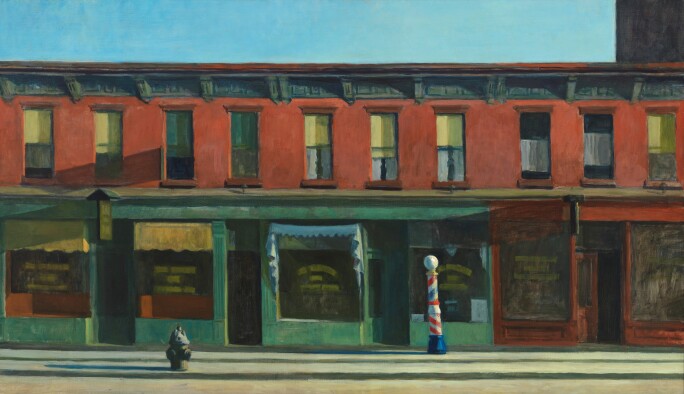
In 1962, Neel moved to 300 West 107th Street, near the convergence of West End Avenue and Broadway, on Manhattan’s Upper West Side, and lived there for the rest of her life. Except for a brief period when she worked in Elaine de Kooning’s studio, Alice painted at home in her apartment.
Windows brings the landscape of Neel’s life under a closer lens, as the painting captures an intimate view from the window of Neel’s apartment, where she received and painted her sitters for twenty years. Cropped tightly to showcase four floors of the building, Neel renders its rough exterior in an incandescent light, while a sweeping shadow reaches across the bottom edge of the picture plane. This distinct luminescence is characteristic of Neel’s later cityscapes from her Upper West Side years, the nuances of which have been articulated by art historians such as Barry Walker: “In the Upper West Side paintings, the space becomes deeper, although still close distance, and the palette lightens in the abundant sunlight from her north-facing windows and the reflected light from the white-painted building opposite them” (Barry Walker, et. al., Alice Neel: Painted Truths, Museum of Fine Arts Houston, 2010, p. 179).
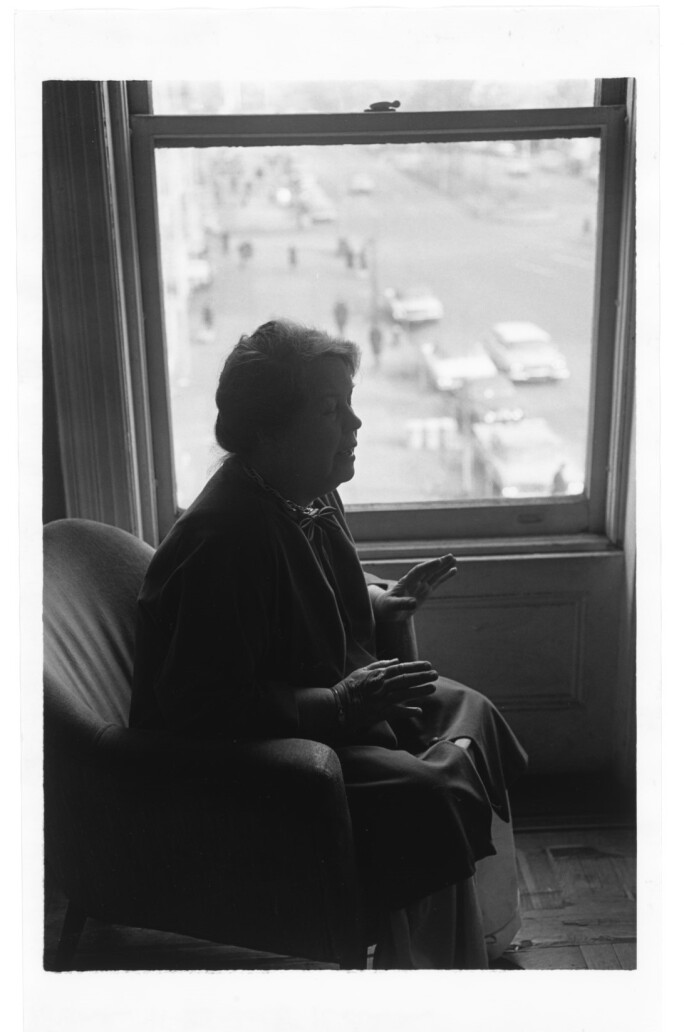
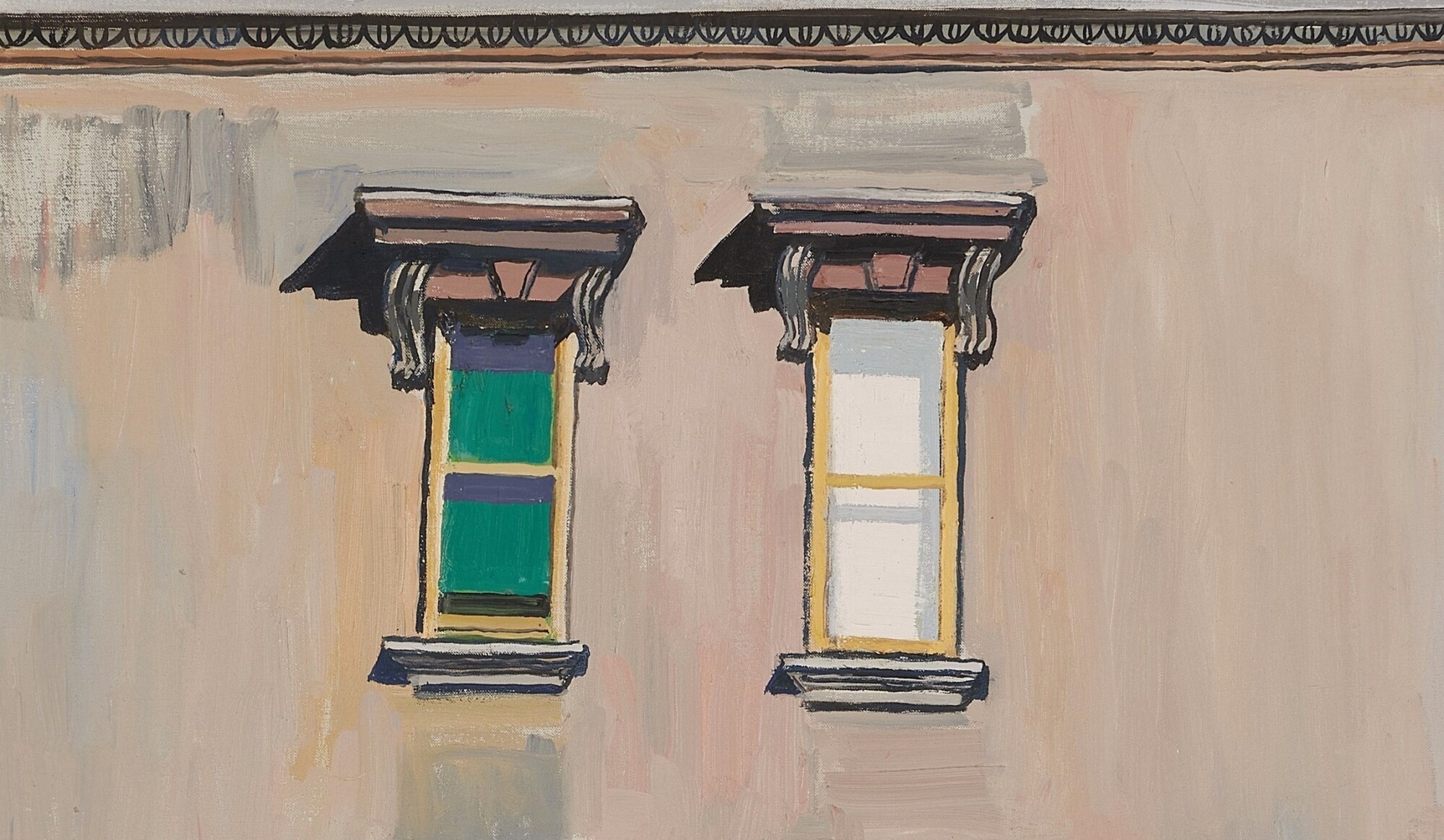
For Neel, whose home was also her studio for a majority of her career, her daily life and her artistic practice were largely intertwined. The subjects of her portraiture, along with her cityscapes, reflect the cultural texture of her neighborhood at the time of their execution.
Earlier in her career, Neel’s Works Progress Administration or WPA paintings of Depression-era New York convey an anxious tension, passersby rendered with a wan physicality among the dimly lit buildings, whereas her works from Greenwich Village in the 40s feature quaint, airy views of the everyday life of downtown pedestrians. By the mid-1960s, Neel’s cityscapes of Upper Manhattan began to feature more buildings than residents, evoking the implication of life beneath the urban façade. In Windows, the bustling city sidewalk is separated from the delicate window frames--however there is an uncanny understanding of life, an awareness of the stories that make up the fabric of this neighborhood. In her masterful observation, Neel suggests only the hints of life behind each window: from curtains tightly drawn to a radiant green window shade, the windows of the present work evoke the character of their inhabitants and echo the shape and nature of the canvas itself. In this way, the present work reflects Neel’s masterful ability to convey personality and life beyond the bounds of figuration.
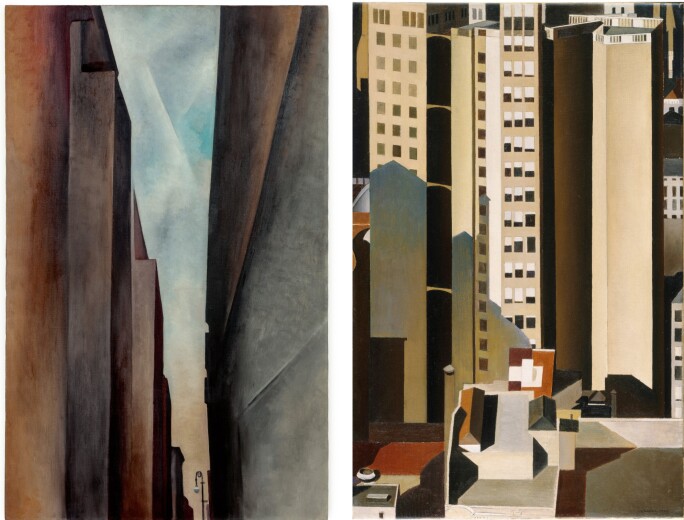
An artist whose work was deeply affected by the relationships she had throughout her life, both stable and turbulent, Neel was especially selective about whom she entrusted to acquire her paintings during her lifetime. A testament to the intimacy of her relationship with the Brand family, the present work has remained in their collection for nearly 60 years, following its acquisition by the young couple Jonathan and Monika Brand, the son and daughter-in-law of Neel’s close friend, novelist and poet Millen Brand. Brand crafted characters based on Neel in his novels, including The Outward Room, 1937, and Some Love, Some Hunger, 1957. Brand and Neel shared a close bond forged through their shared creative and political passions. Both were committed to social justice and civil rights.
“In the Upper West Side paintings, the space becomes deeper, although still close distance, and the palette lightens in the abundant sunlight from her north-facing windows and the reflected light from the white-painted building opposite them”
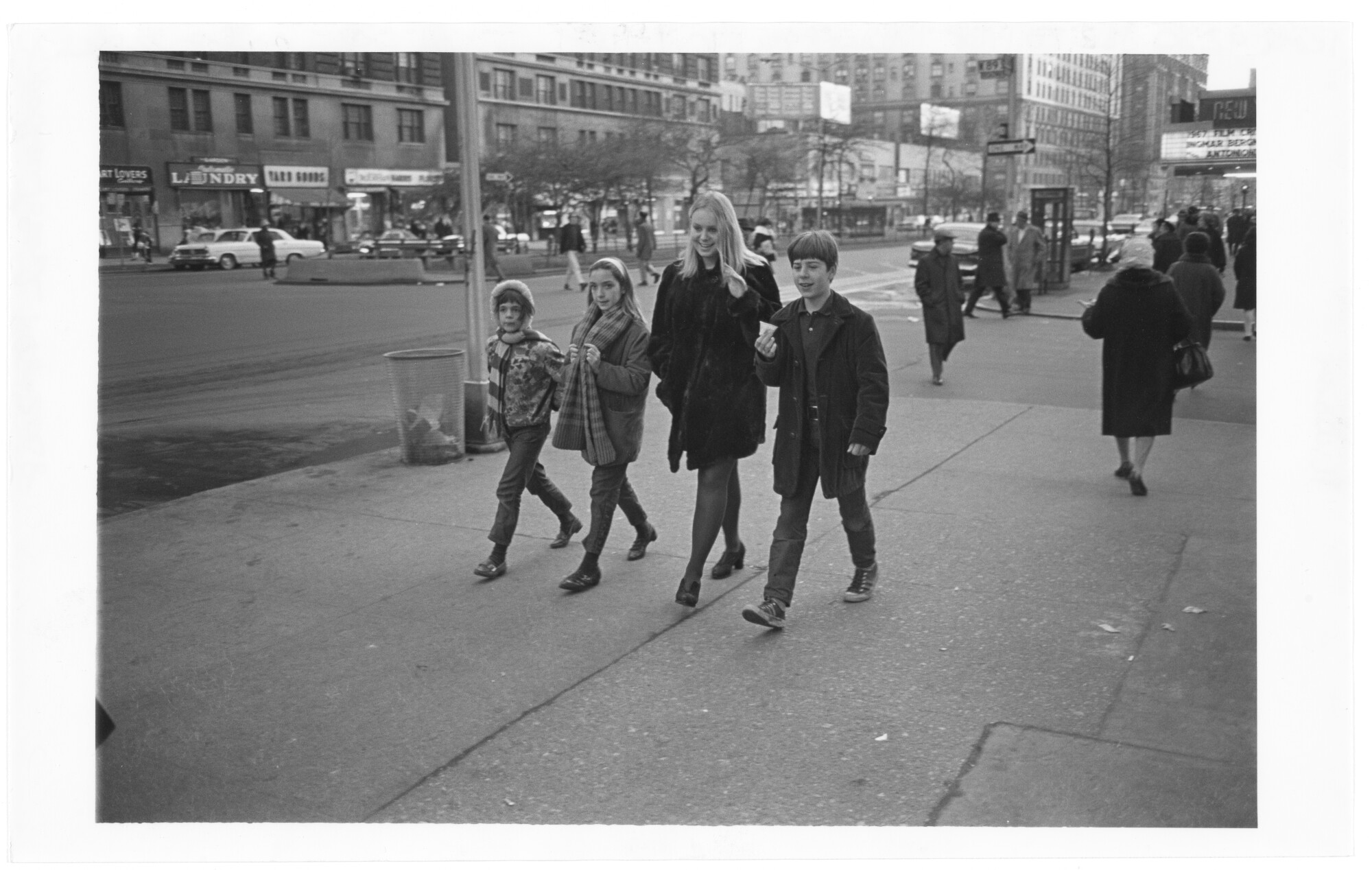
Profoundly intimate, Alice Neel’s Windows of 1965 embodies the artist’s career-long interrogation of the posed facade of her sitters, revealing the nuanced life underneath. Rendered in a deeply expressive and richly painted mode for which she is most celebrated, Windows offers a portrait of another fascinating character in Neel’s illustrious narrative: the city itself.
